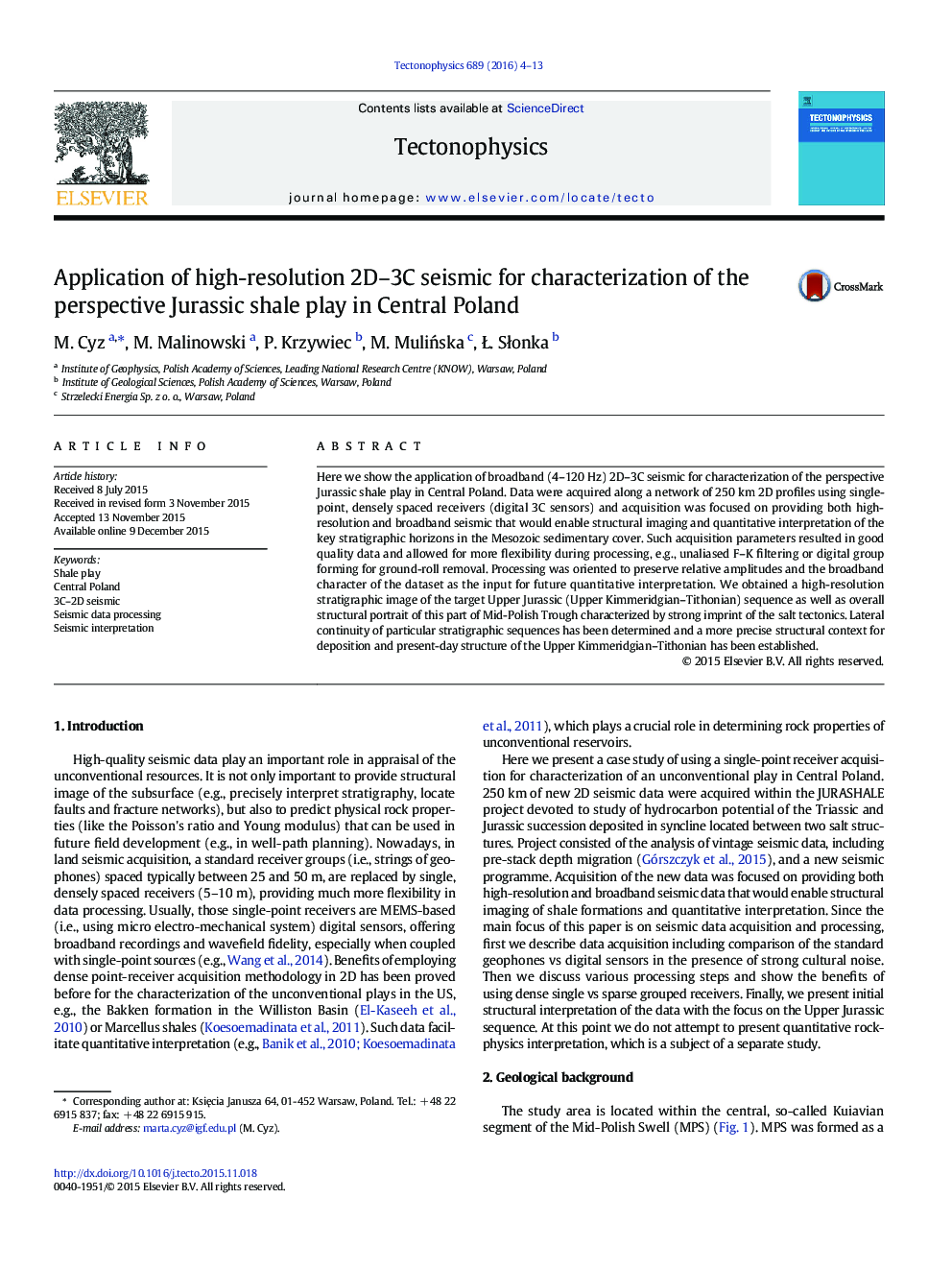| Article ID | Journal | Published Year | Pages | File Type |
|---|---|---|---|---|
| 6433307 | Tectonophysics | 2016 | 10 Pages |
â¢2D-3C acquisition for structural and quantitative interpretation of a shale playâ¢In noisy conditions densely deployed MEMS sensors perform as good as geophone groups.â¢Dense receiver sampling was highly beneficial for data processing enhancement.
Here we show the application of broadband (4-120Â Hz) 2D-3C seismic for characterization of the perspective Jurassic shale play in Central Poland. Data were acquired along a network of 250Â km 2D profiles using single-point, densely spaced receivers (digital 3C sensors) and acquisition was focused on providing both high-resolution and broadband seismic that would enable structural imaging and quantitative interpretation of the key stratigraphic horizons in the Mesozoic sedimentary cover. Such acquisition parameters resulted in good quality data and allowed for more flexibility during processing, e.g., unaliased F-K filtering or digital group forming for ground-roll removal. Processing was oriented to preserve relative amplitudes and the broadband character of the dataset as the input for future quantitative interpretation. We obtained a high-resolution stratigraphic image of the target Upper Jurassic (Upper Kimmeridgian-Tithonian) sequence as well as overall structural portrait of this part of Mid-Polish Trough characterized by strong imprint of the salt tectonics. Lateral continuity of particular stratigraphic sequences has been determined and a more precise structural context for deposition and present-day structure of the Upper Kimmeridgian-Tithonian has been established.
